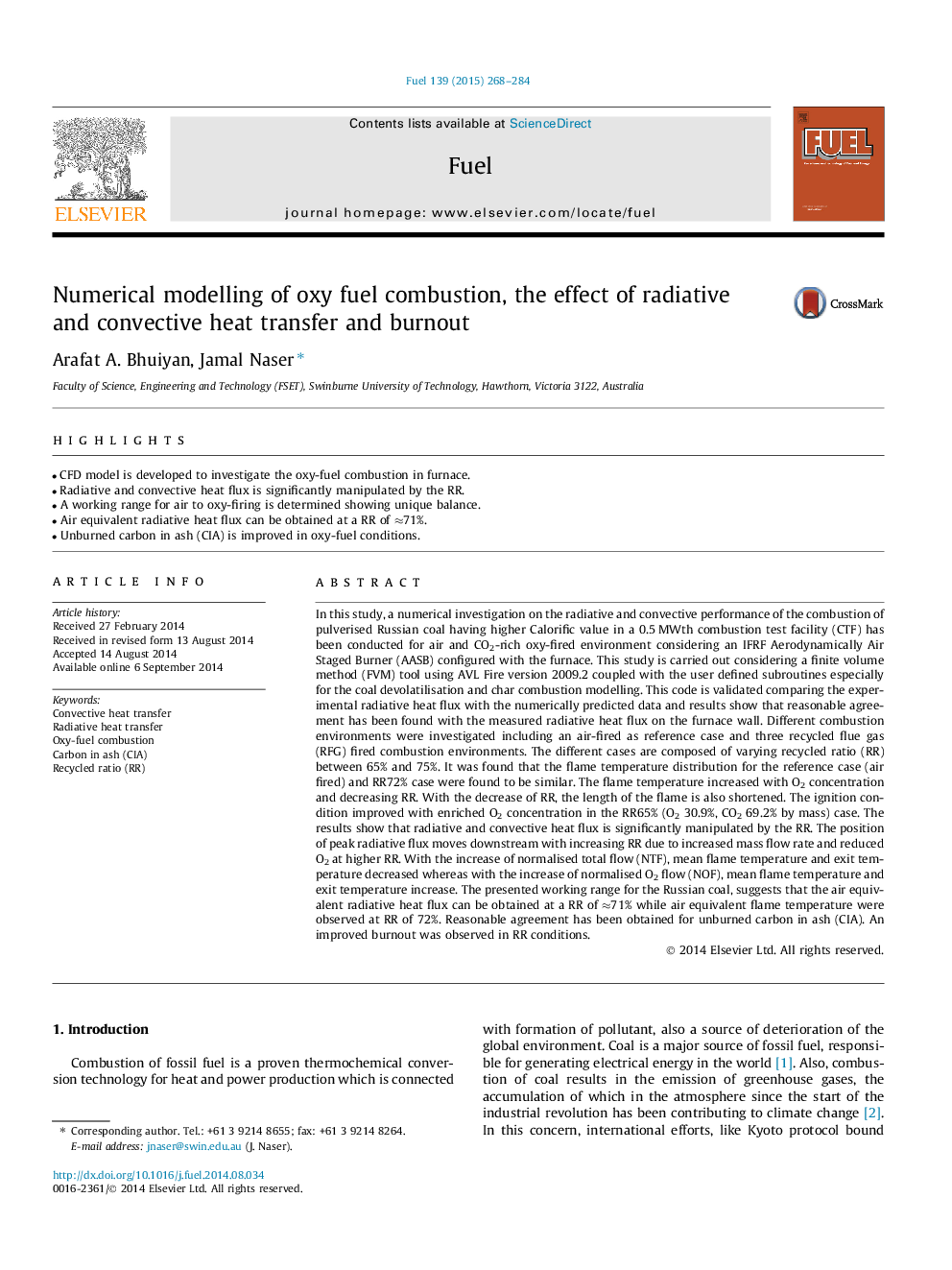| کد مقاله | کد نشریه | سال انتشار | مقاله انگلیسی | نسخه تمام متن |
|---|---|---|---|---|
| 6636503 | 461134 | 2015 | 17 صفحه PDF | دانلود رایگان |
عنوان انگلیسی مقاله ISI
Numerical modelling of oxy fuel combustion, the effect of radiative and convective heat transfer and burnout
ترجمه فارسی عنوان
مدل سازی عددی احتراق سوخت اکسید، اثر انتقال حرارت تابشی و کنتاکت و فرسودگی شغلی
دانلود مقاله + سفارش ترجمه
دانلود مقاله ISI انگلیسی
رایگان برای ایرانیان
کلمات کلیدی
موضوعات مرتبط
مهندسی و علوم پایه
مهندسی شیمی
مهندسی شیمی (عمومی)
چکیده انگلیسی
In this study, a numerical investigation on the radiative and convective performance of the combustion of pulverised Russian coal having higher Calorific value in a 0.5Â MWth combustion test facility (CTF) has been conducted for air and CO2-rich oxy-fired environment considering an IFRF Aerodynamically Air Staged Burner (AASB) configured with the furnace. This study is carried out considering a finite volume method (FVM) tool using AVL Fire version 2009.2 coupled with the user defined subroutines especially for the coal devolatilisation and char combustion modelling. This code is validated comparing the experimental radiative heat flux with the numerically predicted data and results show that reasonable agreement has been found with the measured radiative heat flux on the furnace wall. Different combustion environments were investigated including an air-fired as reference case and three recycled flue gas (RFG) fired combustion environments. The different cases are composed of varying recycled ratio (RR) between 65% and 75%. It was found that the flame temperature distribution for the reference case (air fired) and RR72% case were found to be similar. The flame temperature increased with O2 concentration and decreasing RR. With the decrease of RR, the length of the flame is also shortened. The ignition condition improved with enriched O2 concentration in the RR65% (O2 30.9%, CO2 69.2% by mass) case. The results show that radiative and convective heat flux is significantly manipulated by the RR. The position of peak radiative flux moves downstream with increasing RR due to increased mass flow rate and reduced O2 at higher RR. With the increase of normalised total flow (NTF), mean flame temperature and exit temperature decreased whereas with the increase of normalised O2 flow (NOF), mean flame temperature and exit temperature increase. The presented working range for the Russian coal, suggests that the air equivalent radiative heat flux can be obtained at a RR of â71% while air equivalent flame temperature were observed at RR of 72%. Reasonable agreement has been obtained for unburned carbon in ash (CIA). An improved burnout was observed in RR conditions.
ناشر
Database: Elsevier - ScienceDirect (ساینس دایرکت)
Journal: Fuel - Volume 139, 1 January 2015, Pages 268-284
Journal: Fuel - Volume 139, 1 January 2015, Pages 268-284
نویسندگان
Arafat A. Bhuiyan, Jamal Naser,
